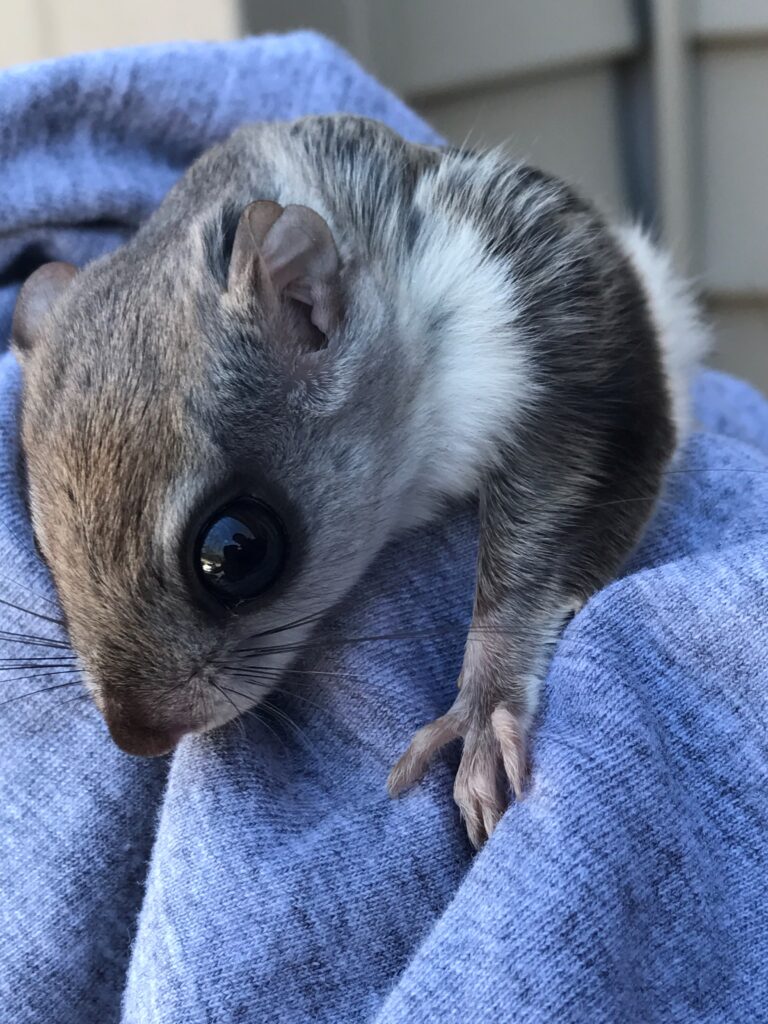Where do Flying Squirrels Live & Nest?
Discover Where Flying Squirrels Like to Build Their Nests & How to Keep the Flying Rodents Out of Your House or Business
When temperatures drop, flying squirrels start looking for warm, cozy places to build their nests. Throughout New Hampshire, Rhode Island, Massachusetts, and Connecticut, barns, homes, garages, and other buildings offer attractive housing options for the furry pests.
Flying squirrels don’t passively enter human spaces. They often take advantage of existing holes in roofs, siding, and walls and then chew and tear to make the holes bigger for easier access. These cute but destructive pests may also damage siding and trim, chew wires, and pose a health hazard to humans by leaving urine and droppings everywhere.
Understanding where flying squirrels live and where they like to build their nests can help homeowners and business owners identify appealing areas for infestation.
Additionally, once they determine where flying squirrels have already nested, they can take action to remove them from the property.
Once these gliding rodents set up shop in a building, the best remedy is to call a professional like Catseye Pest Control to handle the problem. Knowledgeable, experienced technicians at Catseye can not only remove flying squirrels but also keep the critter from returning.
And fun fact, our nuisance wildlife technicians recently removed 78 flying squirrels from a home in Bristol, CT. Imagine the sounds and smells the homeowner must have encountered from the infestation!

Where Do Flying Squirrels Live in the Wild?
Squirrels are a regular sight in parks, trails, woodlands, and backyards, but like many people, you may not be that familiar with where flying squirrels live. After all, these small rodents are nocturnal and rarely seen during daylight hours.
Unlike chipmunks and squirrels, which scamper about on the ground, flying squirrels don’t spend much time on fancy footwork. Instead, they prefer gliding from tree to tree, high above the ground, where they’re safe from predators.
Flying Squirrel Nesting Habits
Flying squirrels prefer older forests and often create nests in hollow spots of tree trunks. They like to use holes made by other animals, including woodpecker cavities. Once they find a suitable place — typically 15 feet or more above ground level, they line the hollows with feathers, fur, leaves, bark, moss, and other materials.
Don’t assume the problem is solved if the critters suddenly disappear from a known nesting spot. Flying squirrels change nesting locations periodically when their dens get dirty or infested with fleas and other parasites.
Dangers of Flying Squirrel Nests
Where there is one flying squirrel, there are often many. These rodents are social animals that tend to live in colonies, with 20 or more flying squirrels sharing a nest. In addition to nesting in rafters and attic spaces, they may burrow into walls where they could cause structural damage, chew on wiring, and infest indoor spaces with fleas, mites, and parasites.
Flying squirrels often damage exterior elements like siding, roofing, and trim. They may widen existing holes and cracks to make it easier to come and go at night. The creatures are most active in the dark when they leave to hunt for birds, eggs, and insects or to gather seeds, nuts, and fungi to eat and bring back to the nest.
Rodents like mice and other squirrels have also been known to become a tasty meal for flying squirrels.
What to Do if You Think You Have Flying Squirrels Nesting in Your Home or Business
Flying squirrels are active at night, which means scratching, chirping, and clucking sounds at night are common signs that flying squirrels are living inside the building. It’s possible to find oval-shaped droppings, urine stains on walls and ceilings, in addition to damage to flowers and fruit trees on the property.
Enlist the help of a professional at the first sign of flying squirrels nesting on your property. Not only are these critters social and live in colonies, but they also leave their scent behind. Without proper removal, that scent could attract other wildlife to the same area.
That’s why Catseye uses a multi-step flying squirrel removal system to remove the pests and prevent future infestations. In addition to removal and cleanup, Cat-Guard Wildlife Exclusion Systems naturally protect homes, businesses, and other structures from flying squirrels and other potential invaders.
Cat-Guard consists of three services, including:
Upper Cat-Guard: Protects from the top of the windows on the first floor to the peak of the roof.
Lower Cat-Guard: Protects from the ground to the top of the first-floor windows.
Trench-Guard: Protects from ground-level to below the surface.
Contact Catseye for Expert Flying Squirrel Removal
If flying squirrels have moved in and are invading your property, working with professionals is the only way to resolve the problem permanently.
Catseye doesn’t just provide pest control — we offer a holistic solution tailored to your specific situation.
Call Catseye today at 888-260-3980 to talk with an expert. Alternatively, schedule a free inspection, and we will come assess where flying squirrels are nesting and create a customized plan.
The post Where do Flying Squirrels Live & Nest? appeared first on Catseye Pest Control.
This article appeared first on Catseye Pest